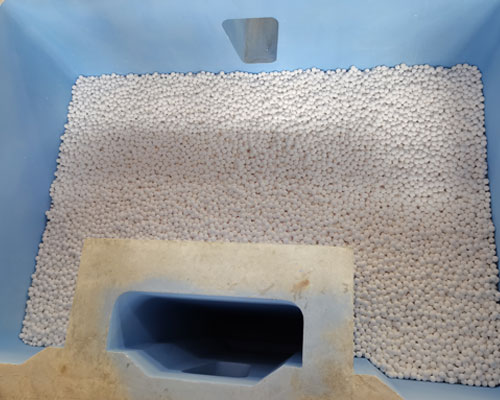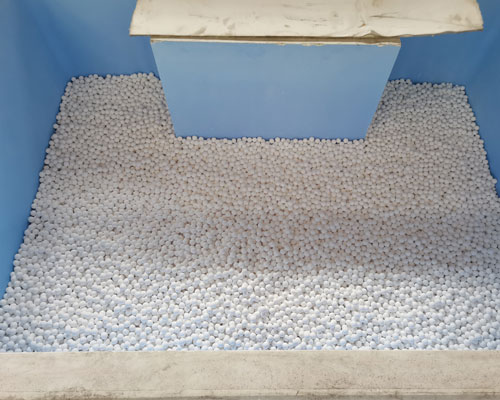The impurities in the melt have been identified as the main cause of product failure during production and use. Therefore, melt cleanliness becomes a measure of melt quality. Two main types of impurities can be distinguished: dissolved elements and suspended particles. The source of impurities can be traced back to the original metal, various melt processing operations, and the interaction of molten metal with refractory materials and the environment. Essentially, the quality of the melt can be controlled by removing alkali trace elements, H, and inclusions. Various technologies, such as online degassing equipment, furnace flux and deep bed filtration equipment, and ceramic foam filters, can be used to control the impurity content.
Basically, two different types of filtration have been widely used in industry: deep bed and filter cake filtration.
The deep bed filter depends on the tortuous path the melt must flow through. The filtration efficiency is inversely proportional to the size of the filter particles and directly proportional to the depth of the filter bed. Inclusions are deposited both on the particles and in the gaps between the filter media. And they may be scattered in part or all of the filter space. Therefore, the filter has a large surface area for trapping inclusions and can trap particles whose size is much smaller than the pores of the filter bed.
The filtration process here is not only one of physical separation such as screening and separation, but also melt filtration is a two-step continuous transportation process.
- First, due to the flow of a large amount of fluid, the inclusions are transported to the filter surface. In the second step, inclusions are trapped due to interface forces or surface forces.
- Generally, for removal by flotation, the removal of particles in the filter may be caused by impact, interception, sedimentation, diffusion and hydrodynamic effects. Particle adhesion may be the result of pressure, chemistry, or forces generated by the van der Waals effect.

The removal efficiency of inclusions can be improved by increasing the filter length or reducing the melt speed. If you want to maintain a constant flow rate, particles will accumulate (or reduce porosity), flow resistance increases, resulting in an increase in pressure drop, and in turn, an increase in interstitial velocity. As a result, the resistance exerted on the contacting particles or the particles that have been captured will increase. Because the particles may not be able to adhere to the filter surface due to the increased resistance, even if they can contact, it may result in lower adhesion efficiency. Likewise, if the adhesion force is overcome, the increased resistance may shed previously captured particles. Particles scrubbed from one location may be recaptured downstream of the filter or, in the worst case, released into the filtered liquid metal. This release may occur during continuous flow or during flow interruption, which is the case when aluminum filtration is performed during casting stop/start. During the restart, a large number of inclusions may be released. The released inclusions may also come from filters or other melt cleaning equipment.

